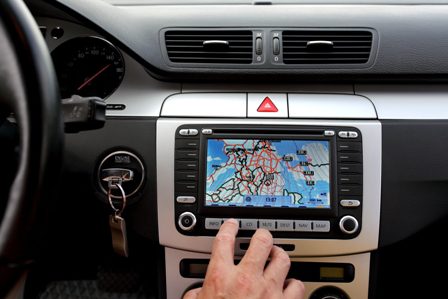Matt Strach
As BLEND’s Director of Enterprise Marketing, Matt brings 14 years in the audio and video production industries to help businesses execute successful voice and video localization campaigns.


Voice prompts, or prerecorded voice recordings, are used in many telephony, contact center, and omnichannel applications. In most instances, voice prompts guide callers or users to their desired destination, whether it’s a menu tree for self-service or a customer service agent. A caller might be accessing unique account information such as balances or order statuses.
Voice prompts can be professionally recorded by companies such as BLEND, or they can be recorded on site by an employee. Additionally, some platforms allow for TTS or AI voices to instruct customers.
As companies turn more of their valuable client relationships over to automated voice systems to lower costs, the quality of those systems including the prerecorded voice prompts are becoming more important. Under what circumstances will a customer appreciate dealing with an automated voice application? If it can quickly help them address their calling purpose quickly, it’s a win-win for everyone involved. If it deteriorates into a circular path to “voicemail jail” filled with frustration, the customer can decide to go to a competitor who employs a more effect voice user interface (VUI) in their automation.
There are a wide range of technologies that use voice prompts. These voice automation applications are generally designed to lower costs. They can be used as a tool in enhancing the customer experience, but this is a rare occurrence in today’s business environment. At BLEND Voice, we’ve worked to improve the performance, effectiveness, and branding aspects of every sort of voice automation in the marketplace. Sure, lowering costs is important. If you lower costs, however, at the expense of irritating and driving your customers to competitors, it becomes very expensive.
With all the money spent on voice automation technology, isn’t it interesting that the only real aspect of the system that touches the caller is the collection of voice prompts that greet and guide the caller? Will the voice prompts greet the caller pleasantly? Will the caller understand the voice prompts? Will the greetings and menus be consistent with the company’s overall brand? Most companies spend millions building their brands in the marketplace. Turning those vital customer relationships over to voice automation without considering the customer experience happens all the time. BLEND makes sure it’s a good thing for the customer and the company.
Automated Attendant
This application answers the phone and allows the caller to “route themselves” to the right person or department. In the past, a receptionist might have answered every call then routed the call to the appropriate person or department. Some companies may still employ live operators and use the automated attendant when the call flow is too heavy for the receptionist to manage. An automated attendant becomes the telephone store front for a company.

Interactive Voice Response (IVR)
IVR systems rose to prominence with banking and financial applications in the 1990s and continue to front-end huge telephony investments by healthcare companies, utilities, and tech service providers to this day. An IVR marries voice processing technology with a database of information such as how much money is in your bank account or if a check has cleared. The voice prompt will speak to you based upon the information in the database.
Automatic Call Distributors (ACD)
While this technology has been used most widely in large call centers, recent VoIP technologies are making it available to smaller companies. It allows you to route calls depending on a number of factors such as call center agent skills, geographic considerations and other factors. When one of the voice prompts asks you which product you’re calling about, it routes you to an agent with specific skills on that particular product line. ACDs allow companies to staff their telephone more efficiently.
Speech Recognition
This technology recognizes what the caller says then routes them appropriately. This technology was very interesting when commercially introduced in the late 90s. Those in the industry hoped it would grow rapidly, but there was still some refinement required. Early providers tried to accomplish too much, too quickly in early speech recognition applications. The voice prompts did sound really good, but it took speech scientists years to make the recognition components work well enough for scalable commercial applications.
Today, speech recognition applications are deployed in most of the Fortune 1000 companies. Now that the systems work much more efficiently in recognizing the caller’s intent, they can be very effective. The most important value speech recognition brings to IVR applications is the ability to flatten all the mind-numbing selection menus. When a speech recognition voice prompt instructs you to say the ‘city’ on an airline or a ‘business name’ on a 411 application, the user experience is infinitely easier.
GPS & Telematics

What was exclusive to David Hasselhoff in the 80s is now enjoyed by drivers of every make and model. Talking cars are real, and BLEND has provided the voice prompts for many car makers and in-car diagnostic companies over the years. The quality of the voice prompts heard in these premium cars is much higher than those required of phone systems. Telephone lines only transmit a small part of the human hearing sound spectrum (350 to 3500 htz) while a high-fidelity sound system produces music and sound that covers most of human hearing (20 to 20,000 htz). Needless to say, the requirements for high quality voice prompt recording are way higher.
Today, BLEND provides telematics and voice prompts for cars including Toyota, Nissan, Mercedes, Ford and General Motors.
Voice Talent

How does a company choose a voice talent to record their voice prompts? We have dozens of US English voice actors who record voice prompts in our studios regularly. Many of them record on the same day each week to lower costs and provide for very predictable turnaround. Let’s face it, we all live in weekly cycles. When we learn that our voice records every Wednesday, for example, it makes it easy to coordinate recording efforts with internal customers this way. That way, a customer gets what is normally an expensive resource (voice talent) at a great price with an easy-to-understand delivery time.
What our customers are saying